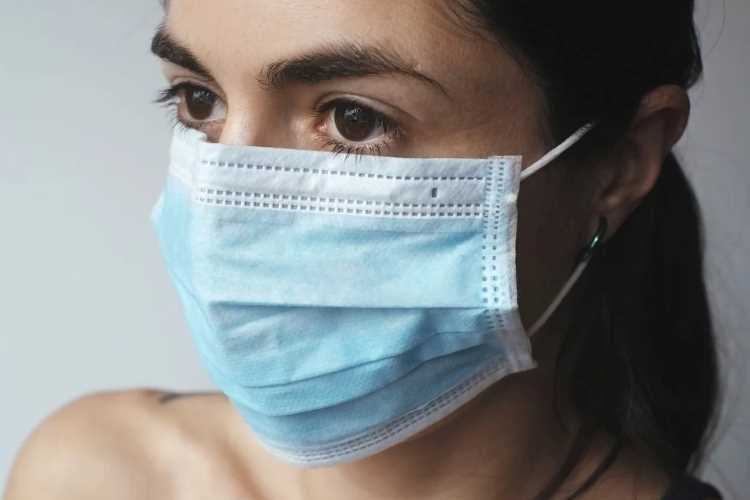
By Rattan Chand
New coronavirus disease, originated in China in December 2019, has spread to more than 180 countries across the globe. According to the World Health Organization’s situation update released on 20th March, 2020, 2.66 lakh cases of COVID-2019 are confirmed and more than 11,000 people, constituting 4.2% of the confirmed cases, have died. The number of new infections and new deaths have increased by 12% a day. More than 90% of the total deaths have occurred in five countries — China, Italy, Spain, France and Iran.
In India, the number of confirmed cases as on Sunday is 324 and five people have died so far due to this virus. Confirmed cases have been reported by 24 States / UTs while the disease has not yet reached in 13 States / UTs. Most cases are reported from Maharashtra (63), Kerala (52), Delhi (27), Uttar Pradesh (25), Rajasthan (24) and Karnataka (20).
Phases of a pandemic
The dynamics of a pandemic disease typically occur in four phases. The first phase is the emergence in a community. The second phase is an outbreak with localised transmission, where sporadic infections with the pathogen occur. In the third phase, the outbreak amplifies into a pandemic — threatening to spread beyond its emergence. The fourth phase is reduced transmission when human-to-human transmission of the pathogen decreases, owing to acquired population immunity or effective interventions to control the disease.
Past experience of handling pandemics
The experience from the past tells us that the pandemics have catastrophic health, societal and economic impacts. They tend to recur in 1–3 waves of illness lasting approximately 6–12 weeks each over a period of 1–2 years. The number of sick and dying people far exceeds the available healthcare resources, and shortages of many other critical resources occur.
The preparedness and response at the national, state and local governments probably determine how severely a territory is impacted. The territories that are able to cope with the impact of a severe pandemic are those that are well prepared, have local stockpiles of essential goods or plans to obtain them. and that can rely on their own populations and local resources to take care of the sick, provide essential services, and maintain social order. As has been seen repeatedly proven during other disasters, the ability of a nation to keep the public well informed and calm is the key to an effective response.
READ: Surviving Coronavirus scare: A wish list for Indian economy, industry
Nations are unlikely to have access to sufficient quantities of anti-viral medications, and a vaccine is not expected to be manufactured until after the first wave of a pandemic. However, evidence suggests that simultaneously using good hygienic practices and “social distancing” strategies, which are intended to keep people away from each other, can dramatically alter the spread of the virus in a territory. These interventions can be used to (1) delay the start of the pandemic, allowing more time for final preparedness activities; (2) decrease the peak impact, minimizing the peak overload of the healthcare sector and decreasing peak loss in days of work, and (3) decrease the total number of people who become sick and die from the disease.
India’s response
India seems to be taking necessary steps to tackle the spread of disease. The Prime Minister’s Office, group of ministers, ministry of health & family welfare and the cabinet secretary are closely monitoring the COVID-2019 situation. The government has invoked powers under The Epidemic Diseases Act, 1897 to enhance preparedness and containment of the virus. State Disaster Response Fund is available to the state governments for response measures. Central ministries along with states / UTs has taken urgent steps to strengthen community surveillance, quarantine facilities, isolation wards, and ensure availability of adequate personal protective equipment, trained manpower and rapid response teams for management of COVID-2019. Adequate testing facilities are in place and efforts are on to rope in private laboratories. All international flights have been banned from entering India for a week starting 22 March 2020.
READ: Coronavirus outbreak: Farm sector will be the hardest hit
Addressing the nation, Prime Minister Narendra Modi has urged the citizens to adopt social distancing. His request to fellow citizens to follow a ‘Janta Curfew’ (voluntary self-isolation) on March 22, 2020 from 7 am to 9 pm has been a spectacular success, but this may have to be extended for many days in order to have the desired impact. India has the resolve to fight the COVID-2019 menace through social distancing and through collective efforts.
Care for vulnerable groups
The country wide curfew or lockdown will have severe impact on the economy. The industries like travel, tourism, leisure, and hospitality are badly impacted. Millions of low-wage earners are likely to bear the brunt of the economic impact of coronavirus. Most vulnerable are aged people without support, rickshaw pullers, daily wagers, casual workers, foot path shopkeepers, informal sector workers, beggars, etc.
The government along with health and medical measures to tackle the COVID-2019, should also ensure regular flow of daily necessities like milk and groceries, wage compensation to daily wagers and casual labourers, timely disbursement of pending MGNREGA wages, disbursal of pensions to destitute and old aged, free ration / food to those in need etc. It is hoped that medical and societal measures will be able to stop the spread of COVID-2019 and India could be a model for the world.
(Dr Rattan Chand is director, EGROW Foundation.)

